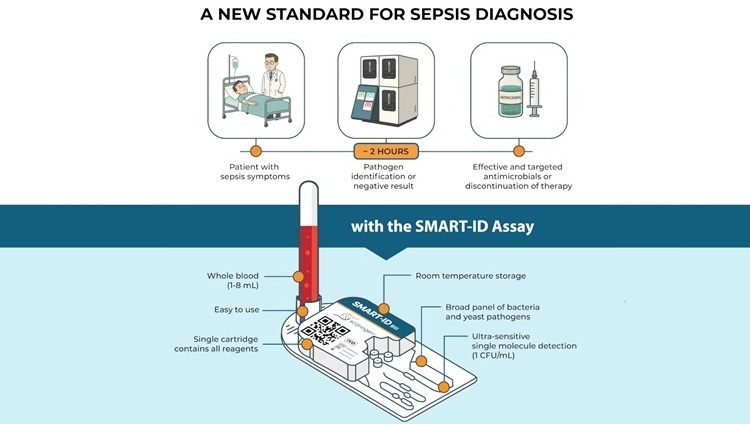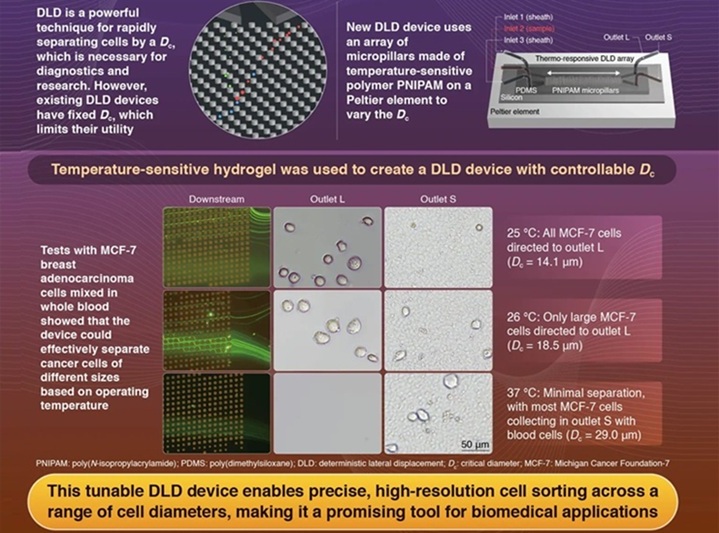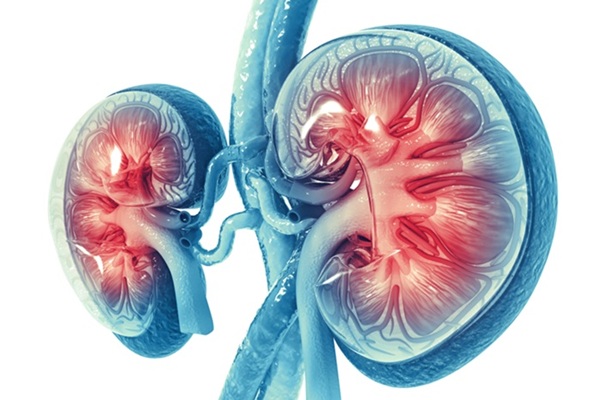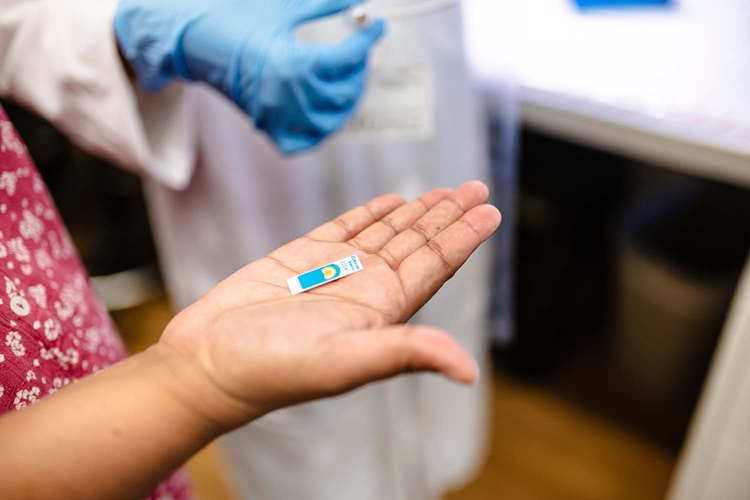Lateral Flow Tests Detect COVID-19 with Similar Accuracy to Laboratory-Based PCR Tests When Used at Onset of Symptoms
|
By LabMedica International staff writers Posted on 15 Jul 2021 |

Illustration
A new study has found that lateral flow tests detect COVID-19 with similar accuracy to laboratory-based PCR tests, providing they are used at the onset of infection and soon after symptoms start.
The finding by researchers at Queen Mary University of London (London, UK), University of Oxford (Oxford, UK), Institute for Advanced Studies (Vienna, Austria), and the Medical University of Graz (Graz, Austria) could be pivotal to strategies looking to tackle the next phase of the pandemic, especially as timely and rapid testing becomes even more important once restrictions are lifted.
Lateral flow tests are cheaper and produce a result in just 30 minutes - much faster than the time it takes to receive a PCR test result, which can take 1-3 days. As part of the study, over 2,500 people with mild to moderate flu-like symptoms were assessed by GPs in the district of Liezen (population 79,652), Austria, between October 22 and November 30, 2020 and tested for viral antigen using lateral flow tests. Those who were suspected to have COVID-19 were also tested using a PCR test. The lateral flow tests detected more than 95% of the cases found by PCR, and correctly identified 89% of cases as negative.
The study was the first to compare lateral flow and PCR testing on the same group of people on a large scale. It also included the variables of a real-world setting: five different brands of test kit, three laboratories, and professional swabbing offered at 20 GP practices. In summary, the study provides evidence that lateral flow tests can accurately detect SARS-CoV-2 infection as an alternative to PCR testing among symptomatic patients in a real-life primary care setting across a large geographical area.
“Previous studies have suggested lateral flow tests may be less sensitive than PCR in detecting COVID-19, particularly among asymptomatic individuals and during the early or late stage of an infection when the viral load is lowest. But we have found that in patients who are newly symptomatic, the two testing methods have similar levels of accuracy,” said study author Dr Werner Leber from Queen Mary University of London. “Countries are considering using lateral flow tests to manage future waves of the pandemic. Our findings support this move, but ensuring tests are properly administered should be integral to any strategy.”
“In our study, both shorter duration of symptoms and higher viral load were significantly associated with positive lateral flow tests. This highlights the necessity of testing at early infection with lateral flow tests, and shows that in patients who are newly symptomatic, the two testing methods have similar levels of accuracy,” added Dr. Jasmina Panovska-Griffiths from the Big Data Institute and The Queen’s College at University of Oxford. “Our study is the first study to demonstrate that point-of-care antigen testing using lateral flow tests combined with clinical assessment of symptomatic patients can rapidly and accurately detect SARS-CoV-2 infection in primary care.”
Related Links:
Queen Mary University of London
University of Oxford
Institute for Advanced Studies
Medical University of Graz
The finding by researchers at Queen Mary University of London (London, UK), University of Oxford (Oxford, UK), Institute for Advanced Studies (Vienna, Austria), and the Medical University of Graz (Graz, Austria) could be pivotal to strategies looking to tackle the next phase of the pandemic, especially as timely and rapid testing becomes even more important once restrictions are lifted.
Lateral flow tests are cheaper and produce a result in just 30 minutes - much faster than the time it takes to receive a PCR test result, which can take 1-3 days. As part of the study, over 2,500 people with mild to moderate flu-like symptoms were assessed by GPs in the district of Liezen (population 79,652), Austria, between October 22 and November 30, 2020 and tested for viral antigen using lateral flow tests. Those who were suspected to have COVID-19 were also tested using a PCR test. The lateral flow tests detected more than 95% of the cases found by PCR, and correctly identified 89% of cases as negative.
The study was the first to compare lateral flow and PCR testing on the same group of people on a large scale. It also included the variables of a real-world setting: five different brands of test kit, three laboratories, and professional swabbing offered at 20 GP practices. In summary, the study provides evidence that lateral flow tests can accurately detect SARS-CoV-2 infection as an alternative to PCR testing among symptomatic patients in a real-life primary care setting across a large geographical area.
“Previous studies have suggested lateral flow tests may be less sensitive than PCR in detecting COVID-19, particularly among asymptomatic individuals and during the early or late stage of an infection when the viral load is lowest. But we have found that in patients who are newly symptomatic, the two testing methods have similar levels of accuracy,” said study author Dr Werner Leber from Queen Mary University of London. “Countries are considering using lateral flow tests to manage future waves of the pandemic. Our findings support this move, but ensuring tests are properly administered should be integral to any strategy.”
“In our study, both shorter duration of symptoms and higher viral load were significantly associated with positive lateral flow tests. This highlights the necessity of testing at early infection with lateral flow tests, and shows that in patients who are newly symptomatic, the two testing methods have similar levels of accuracy,” added Dr. Jasmina Panovska-Griffiths from the Big Data Institute and The Queen’s College at University of Oxford. “Our study is the first study to demonstrate that point-of-care antigen testing using lateral flow tests combined with clinical assessment of symptomatic patients can rapidly and accurately detect SARS-CoV-2 infection in primary care.”
Related Links:
Queen Mary University of London
University of Oxford
Institute for Advanced Studies
Medical University of Graz
Latest COVID-19 News
- New Immunosensor Paves Way to Rapid POC Testing for COVID-19 and Emerging Infectious Diseases
- Long COVID Etiologies Found in Acute Infection Blood Samples
- Novel Device Detects COVID-19 Antibodies in Five Minutes
- CRISPR-Powered COVID-19 Test Detects SARS-CoV-2 in 30 Minutes Using Gene Scissors
- Gut Microbiome Dysbiosis Linked to COVID-19
- Novel SARS CoV-2 Rapid Antigen Test Validated for Diagnostic Accuracy
- New COVID + Flu + R.S.V. Test to Help Prepare for `Tripledemic`
- AI Takes Guesswork Out Of Lateral Flow Testing
- Fastest Ever SARS-CoV-2 Antigen Test Designed for Non-Invasive COVID-19 Testing in Any Setting
- Rapid Antigen Tests Detect Omicron, Delta SARS-CoV-2 Variants
- Health Care Professionals Showed Increased Interest in POC Technologies During Pandemic, Finds Study
- Set Up Reserve Lab Capacity Now for Faster Response to Next Pandemic, Say Researchers
- Blood Test Performed During Initial Infection Predicts Long COVID Risk
- Low-Cost COVID-19 Testing Platform Combines Sensitivity of PCR and Speed of Antigen Tests
- Finger-Prick Blood Test Identifies Immunity to COVID-19
- Quick Test Kit Determines Immunity Against COVID-19 and Its Variants
Channels
Clinical Chemistry
view channel
Chemical Imaging Probe Could Track and Treat Prostate Cancer
Prostate cancer remains a leading cause of illness and death among men, with many patients eventually developing resistance to standard hormone-blocking therapies. These drugs often lose effectiveness... Read more
Mismatch Between Two Common Kidney Function Tests Indicates Serious Health Problems
Creatinine has long been the standard for measuring kidney filtration, while cystatin C — a protein produced by all human cells — has been recommended as a complementary marker because it is influenced... Read moreMolecular Diagnostics
view channel
Simple Urine Test to Revolutionize Bladder Cancer Diagnosis and Treatment
Bladder cancer is one of the most common and deadly urological cancers and is marked by a high rate of recurrence. Diagnosis and follow-up still rely heavily on invasive cystoscopy or urine cytology, which... Read more
Blood Test to Enable Earlier and Simpler Detection of Liver Fibrosis
Persistent liver damage caused by alcohol misuse or viral infections can trigger liver fibrosis, a condition in which healthy tissue is gradually replaced by collagen fibers. Even after successful treatment... Read moreHematology
view channel
Platelet Activity Blood Test in Middle Age Could Identify Early Alzheimer’s Risk
Early detection of Alzheimer’s disease remains one of the biggest unmet needs in neurology, particularly because the biological changes underlying the disorder begin decades before memory symptoms appear.... Read more
Microvesicles Measurement Could Detect Vascular Injury in Sickle Cell Disease Patients
Assessing disease severity in sickle cell disease (SCD) remains challenging, especially when trying to predict hemolysis, vascular injury, and risk of complications such as vaso-occlusive crises.... Read more
ADLM’s New Coagulation Testing Guidance to Improve Care for Patients on Blood Thinners
Direct oral anticoagulants (DOACs) are one of the most common types of blood thinners. Patients take them to prevent a host of complications that could arise from blood clotting, including stroke, deep... Read moreImmunology
view channel
New Test Distinguishes Vaccine-Induced False Positives from Active HIV Infection
Since HIV was identified in 1983, more than 91 million people have contracted the virus, and over 44 million have died from related causes. Today, nearly 40 million individuals worldwide live with HIV-1,... Read more
Gene Signature Test Predicts Response to Key Breast Cancer Treatment
DK4/6 inhibitors paired with hormone therapy have become a cornerstone treatment for advanced HR+/HER2– breast cancer, slowing tumor growth by blocking key proteins that drive cell division.... Read more
Chip Captures Cancer Cells from Blood to Help Select Right Breast Cancer Treatment
Ductal carcinoma in situ (DCIS) accounts for about a quarter of all breast cancer cases and generally carries a good prognosis. This non-invasive form of the disease may or may not become life-threatening.... Read moreMicrobiology
view channel
Rapid Diagnostic Test Matches Gold Standard for Sepsis Detection
Sepsis kills 11 million people worldwide every year and generates massive healthcare costs. In the USA and Europe alone, sepsis accounts for USD 100 billion in annual hospitalization expenses.... Read moreRapid POC Tuberculosis Test Provides Results Within 15 Minutes
Tuberculosis remains one of the world’s deadliest infectious diseases, and reducing new cases depends on identifying individuals with latent infection before it progresses. Current diagnostic tools often... Read more
Rapid Assay Identifies Bloodstream Infection Pathogens Directly from Patient Samples
Bloodstream infections in sepsis progress quickly and demand rapid, precise diagnosis. Current blood-culture methods often take one to five days to identify the pathogen, leaving clinicians to treat blindly... Read morePathology
view channel
Tunable Cell-Sorting Device Holds Potential for Multiple Biomedical Applications
Isolating rare cancer cells from blood is essential for diagnosing metastasis and guiding treatment decisions, but remains technically challenging. Many existing techniques struggle to balance accuracy,... Read moreAI Tool Outperforms Doctors in Spotting Blood Cell Abnormalities
Diagnosing blood disorders depends on recognizing subtle abnormalities in cell size, shape, and structure, yet this process is slow, subjective, and requires years of expert training. Even specialists... Read moreTechnology
view channel
Artificial Intelligence Model Could Accelerate Rare Disease Diagnosis
Identifying which genetic variants actually cause disease remains one of the biggest challenges in genomic medicine. Each person carries tens of thousands of DNA changes, yet only a few meaningfully alter... Read more
AI Saliva Sensor Enables Early Detection of Head and Neck Cancer
Early detection of head and neck cancer remains difficult because the disease produces few or no symptoms in its earliest stages, and lesions often lie deep within the head or neck, where biopsy or endoscopy... Read moreIndustry
view channel
Abbott Acquires Cancer-Screening Company Exact Sciences
Abbott (Abbott Park, IL, USA) has entered into a definitive agreement to acquire Exact Sciences (Madison, WI, USA), enabling it to enter and lead in fast-growing cancer diagnostics segments.... Read more

























